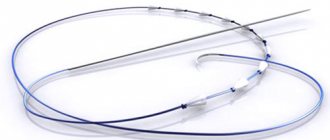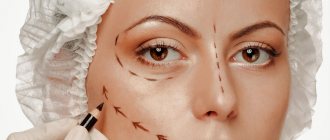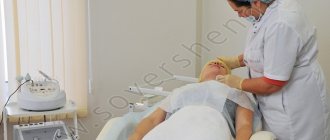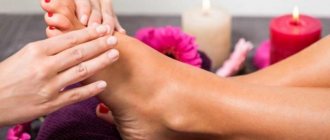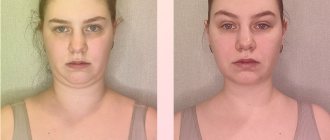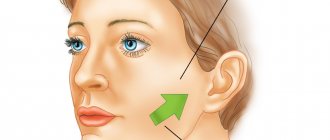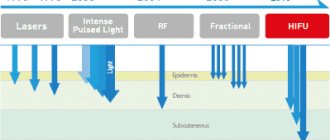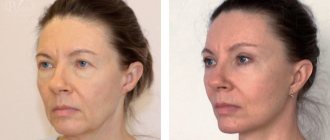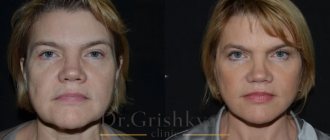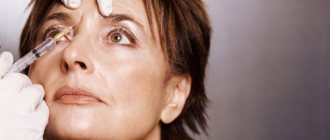Are you noticing the first age-related changes?
Face
: loss of tone in the lower jaw and neck, drooping soft tissues of the midface, flaccid skin, nasolabial folds, flabby chin;
Body
: decreased elasticity of the skin of the chest, abdomen, buttocks.
The ideal solution for facial rejuvenation in this case will be the innovative thread lifting Silhouette Lift . This is an effective non-surgical express method of facial rejuvenation.
. She began her triumphal march in Europe and has already conquered more than 40 countries.
Facelift with threads according to the method of Andrey Iskornev.
With the help of threads, the tissues of the middle zone of the face are redistributed as naturally as possible into a high, youthful position. Sunken cheeks are modeled. The effect is enhanced by additional installation of threads in the lower jaw area to align the contour.
Model in the photo: “before” and 5 days “after” the procedure.
Thread lifting effect
The good thing about the thread lift procedure is that it has a complex effect: it rejuvenates the skin, removes age-related tissue sagging, and gets rid of wrinkles. The threads create a voluminous frame that supports the skin for some time and prevents age-related changes from returning. Absorbable mesothreads stimulate the synthesis of collagen and elastin - substances responsible for the freshness and youth of the skin.
Contraindications for thread lifting
An intervention such as a thread lifting procedure is safe and minimally invasive, but still has a number of contraindications:
- pregnancy and breastfeeding;
- exacerbation of herpes;
- skin diseases in the area of intended exposure;
- period of menstruation;
- exacerbation of chronic diseases, acute respiratory viral infections with elevated temperature and fever;
- autoimmune disorders;
- diabetes;
- severe pathologies of internal organs;
- incoagulability and other blood diseases;
- malignant neoplasms.
Contraindications such as herpes, skin diseases and ARVI are relative; after they are eliminated, lifting with Aptos threads will be possible again.
Before the procedure, you need to make sure that you are not allergic to anesthetics or components of the threads - this will also be a contraindication for a lift. You can check with allergy tests in the clinic or with an allergist.
What types of threads are there?
Threads are divided into three groups depending on how they behave in the body:
Get an online consultation
right now.
Get
- Non-absorbable - these include APTOS threads, as well as gold, platinum and Teflon Gore-Tex threads. They contain a completely artificial material for the body that does not dissolve over time. The effect after a thread lift lasts up to ten years.
- Long-term absorbable - they are absorbed by the body for a very long time, about five years (plus/minus a year). These include Tissulift, Happy Lift, Siluet Soft.
- Absorbable - consist of completely biodegradable materials. They are dissolved by the body in just six months, but during this time they are overgrown with strong connective tissue, which acts as a frame for another three years. For example, Reande threads.
- Combined ones are made of a polypropylene base with an absorbable cone. The outer shell gradually dissolves, and in its place a capsule of connective tissue forms on top of the base. The effect of the procedure is preserved for 7 years.
Advantages and disadvantages
| Advantages | Flaws |
|
|
Preparation for thread lifting
It is best for women to schedule a thread lift procedure in the middle of the menstrual cycle, when it is easier for the body to recover. A week before the cosmetic intervention, you should begin direct preparation for thread lifting - give up alcohol and smoking, stop taking blood thinning medications: aspirin, ibuprofen, vitamins C and E. If the drugs were prescribed by a doctor, his permission is required to cancel them.
When preparing for thread lifting, you can drink Dicinon for three days (only with the doctor’s permission!) - this will reduce the risk of hematomas and bruises. Preliminary mesotherapy or taking the drug "Lymphomyosot" will help prevent swelling after the thread lift procedure. Plasmolifting will help speed up skin restoration. If you plan to insert threads into the forehead, you can inject Botox 2 weeks before the thread lift - this will prevent the threads from moving due to the activity of the facial muscles.
Also, preparation for the procedure includes a consultation with a therapist to identify possible contraindications. He or she may order tests and refer you to other specialists, such as a dermatologist or endocrinologist.
Healing period
Lasts about 2-4 weeks.
The sterile patch can be removed after two days. The appearance of hematomas, redness, and discomfort in the injection area cannot be ruled out. The symptoms go away on their own. Only after this can a person evaluate the result: the skin becomes elastic, tightened, the color and texture are even. Recommendations from cosmetologists are as follows:
- puncture areas should be treated with an alcohol-free antiseptic until complete healing;
- take care of your face with cosmetics that do not contain aggressive components (abrasive particles, acids);
- sleep for 6-7 days exclusively on your back with your head raised;
- do not use products that have not been tried before due to the risk of developing an allergic reaction;
- do not make sudden movements with the chewing muscles, watch your facial expressions.
Also, for two weeks you should not visit the sauna, solarium, beaches, drink alcohol, or smoke. If you follow these tips, a natural collagen framework will form.
How does the thread lift procedure work?
From the patient's point of view, the procedure consists of three stages:
- Local anesthesia is performed to eliminate any pain during the procedure.
- Lines and dots are drawn on the face—the places where the threads are inserted.
- The threads are inserted using a special needle through small punctures. It doesn't hurt, but it's a little unpleasant. The number of inserted threads depends on the volume of the lift.
The entire thread lift procedure rarely takes more than half an hour, after which the patient can immediately go home, unlike plastic surgery. The lifting effect is noticeable 14 days after the start of rehabilitation, when the punctures heal completely and swelling subsides.
Rehabilitation after thread lifting
An intervention such as a thread lift procedure changes the patient’s life for some time. In the first one and a half to two weeks, swelling and swelling appear on the face at the injection sites. If you have a low pain threshold or increased sensitivity, you will have to take painkillers for several days after the procedure; your doctor will prescribe them for you.
Swelling is a natural reaction of the body, as the facial skin is injured during the procedure. It is a sign of the beginning of rehabilitation, the launch of protective processes and the formation of a dense framework of connective tissue around the threads.
In the first two weeks, it is better not to touch the skin at all. For two or three days it is forbidden to even wash your face - you can only gently wipe your face with a cotton pad soaked in water. It is better to sleep with a compression mask.
Rehabilitation after thread lifting includes treating punctures three times a day with an antiseptic, for example, Miramistin.
After swelling subsides, rehabilitation continues for another two weeks. At this time, you cannot visit saunas, steam baths, solariums, intensely sunbathe, or do peelings and scrubs. Facial massage is prohibited. Drinking alcohol and smoking are also prohibited. After a month, rehabilitation ends and you can return to normal life. The skin strengthened with a thread base looks young and elastic.
Complications after thread lifting
After the thread lifting procedure, hematomas and bruises often occur in the injection area. They appear when blood vessels are damaged, due to poor blood clotting or lifting during menstruation. In general, they are not dangerous, can be easily eliminated with special ointments based on troxerutin or heparin, but they greatly spoil the appearance of the face.
The swelling characteristic of the rehabilitation period sometimes does not subside, but only intensifies. In this case, physiotherapy and decongestant medications are required to eliminate them. If the swelling does not subside, this is a sign of serious inflammation due to violations of antiseptic rules. Inflammation usually requires removal of the threads.
Sometimes an inexperienced surgeon may accidentally hit a nerve, in which case problems with facial expressions may arise. Usually facial expressions return to normal after 3-4 days; if this does not happen, you need to consult a doctor. Our clinic employs only experienced professionals, so our doctors cannot cause such a complication!
Are threads dangerous?
There are not many complications with a thread lift in the hands of a professional. These include, for example, hematomas. But this is a natural situation with techniques that involve punctures; it goes away quickly. Infections and inflammation are also possible complications. Therefore, it is very important to maintain sterility during the procedure and contact clinics that have licenses to conduct such procedures. Contouring is possible if the thread is inserted too superficially. Lumps and irregularities may appear. But in the hands of an experienced specialist, subject to all sterility conditions, these complications are unlikely.
Team of Doctors
Patients often notice that after lifting their eyebrows seem to be set too high or their cheekbones stick out unnaturally. Because the tissues swell after the procedure, they move downward a little, so that when the swelling subsides, the face will take on a normal, natural appearance.
There are late complications of thread lifting that appear several months after the procedure. If the doctor has placed the thread incorrectly, it may begin to appear through the skin partially or completely - this is called contouring. There is also a risk of thread migration—moving to another area due to the patient's weak connective tissue. In both cases the thread will need to be removed. Removal is a safe procedure that is done through small punctures using special instruments.
You cannot treat complications after lifting on your own; you should consult a doctor with any problems.
Cost of thread lifting
The cost of a thread lifting procedure starts from 15 thousand rubles for the installation of absorbable mesothreads. Lifting with APTOS threads will cost at least 50 thousand rubles. Silhouette Lift threads cost from 40 thousand. The price already includes both the threads and the procedure itself, along with anesthesia and the doctor’s work. However, the price of such procedures may fluctuate because it also depends on some other factors. For example, the price of a facelift with threads increases if simultaneous correction of several zones is planned.
Thread lifting is a modern, low-traumatic procedure for rejuvenating the body, which will help improve the appearance and tone of the skin. Moreover, it does not require large material costs and physical effort. Make an appointment with our doctor and get comprehensive information about which type of threads is right for you. During the consultation, you will be able to read reviews from the clinic’s clients and see their photos before and after the reinforcement procedure.
Find out which rejuvenation method is right for you. Make an appointment with Dr. A.N. Begme.
Result
The results of thread lifting can be noticed immediately after the procedure, but over time (on average a month) the effect only increases. Wherein:
- sagging skin is reduced or eliminated;
- the aging process slows down;
- tissue elasticity is restored;
- wrinkles and folds are smoothed out;
- the oval of the face is restored or simply becomes significantly better;
- provides a facelift.
Thanks to thread lifting with absorbable material, it is possible to maintain a pronounced result for about 1-1.5 years or even longer. Its duration depends on a number of reasons: the patient’s age and lifestyle, skin type and skin care, as well as many other significant factors. However, in any case, the possibilities of such a cosmetic procedure allow the patient to quickly solve a variety of aesthetic problems.
Thus, we can safely say that of the many modern techniques aimed at combating skin aging, thread lifting is one of the most reliable and proven ways to turn back the clock and preserve the youth of the face and body without unnecessary sacrifices.
